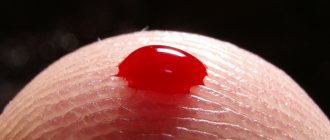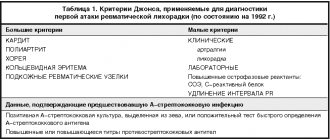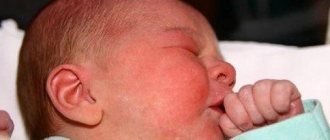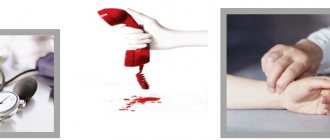Why does hypotension occur?
Hypotonicity can be both the result of adaptation of the nervous system to stress, and a sign of more severe (organic) disorders.
To identify the cause and prevent possible more severe disorders, parents need to visit a neurologist who will conduct all the necessary studies. Possible causes of hypotension:
- Complications during childbirth, fetal asphyxia;
- Severe pregnancy;
- Improperly organized nutrition of the baby;
- Genetic diseases and various developmental defects;
- Low birth weight, prematurity;
- Bad habits of the mother during pregnancy;
- Viral and/or infectious diseases of the newborn;
- Excess of vitamin D in the body.
An earlier visit to a neurologist will help solve the problem as quickly and effectively as possible, without waiting for possible complications.
Hypertonicity
Increased muscle tone develops as a result of damage to the nervous system and brain. Causes: hypoxia during childbirth, birth injuries, cerebral hemorrhages, meningitis. Symptoms Hypertonicity is characterized by stiffness and tightness in the baby. The child does not relax even in his sleep, his legs are pressed to his body, and his hands are clenched into fists. Newborns may experience head retention that is not typical for this age. It occurs due to increased tone of the neck muscles. There are attacks of intestinal colic, anxiety and sleep disturbances; frequent regurgitation, trembling of the arms and chin may be characteristic.
Why is it dangerous? Reduces the speed of psychomotor development of the baby. Children with hypertonicity begin to sit up, crawl and walk later than their peers.
Symptoms
Parents can suspect hypotension simply by observing their child. Immediately after birth, the newborn exhibits physiological hypertonicity, so decreased muscle tone is immediately noticeable. At an older age, tone disturbances are also noticeable.
Possible signs:
- During the newborn period, the baby's arms and legs are not tucked towards the body; he lies in the “frog” pose with straightened arms and legs;
- Refusal of breastfeeding;
- Frequent regurgitation;
- Does not turn the head, does not hold the head at 3-4 months;
- Does not roll over at 5-6 months;
- Does not sit up independently at 6-7 months;
- Does not crawl on all fours at 7-9 months;
- Does not hold objects in hands (at 3-4 months);
- Lethargic, unemotional.
Additional diagnostics are carried out by the doctor during the examination. Looks for the presence or absence of neurological signs of hypotonicity, the presence of pathological reflexes, and, if necessary, prescribes additional research methods: ultrasound, neurosonography, EEG, MRI and others.
Muscle tone in children: norm and pathology
Muscle tone in children: norm and pathology
Tone disorders occur in almost every baby in the first year of life. It is very important to identify the problem in time and help the child cope with it.
discuss in the cerebral palsy community
muscle tone, newborns (0-1 month), infants (1 month - 1 year), health, massage, physical therapy, cerebral palsy, cerebral palsy, cerebral palsy and other paralytic syndromes
Tone is the minimum muscle tension required to maintain the body position at rest. A baby who has lived in the fetal position for 9 months tends to have increased muscle tone after birth. However, the norm is considered to be such muscle tension when an adult can easily straighten the baby’s legs or unclench his fists. An important criterion is the symmetry of the tone and its predominance in the flexor muscles. With age, the tone gradually decreases.
To control muscle tone, it is necessary to regularly show the child to the doctor. The pediatrician checks the baby's reflexes and evaluates the condition of the baby's muscles.
If left untreated
It is important to identify hypotension in time. Moms who have no experience with babies may not notice problems in their first child. It’s good when an experienced person is nearby or a doctor identifies the violation. If the decreased tone is not treated, it will affect the further development of the child. Much later he will begin to hold his head, crawl, and walk.
Violation of the appearance of these skills causes a delay in mental and speech development in the child. The development of his central nervous system occurs through the activation of motor functions. It is better to play it safe and consult a neurologist in vain than to miss alarming symptoms.
It is worth considering one more detail: hypotonia can manifest itself at different ages. It can be diagnosed almost immediately after birth - by checking reflexes. In this case, the cause of the disorder usually lies in birth trauma. Also, a violation of muscle tone can appear at any age, but its appearance is especially dangerous in the first 2 years of life, since this most often indicates a disturbance in the development of the central nervous system. At an older age, hypotension is usually a sign of complications after infectious or viral diseases.
Muscle tone
Muscle tone
July 11, 2016
Quite often, at an appointment with a pediatrician or neurologist, parents are told that the child has altered muscle tone and needs treatment. What is muscle tone, what does it depend on, and how do these disorders threaten the baby?
First of all, muscle tone depends on the work of the nervous system, which helps to form the child’s motor activity, that is, to develop motor functions in a timely manner. Changes in tone can be manifested by its increase (hypertonicity) and decrease (muscle hypotonia). It can also change when periods of 5th increase and decrease alternate, which is commonly called muscular dystonia. Changes in muscle tone can be mild or severe - it all depends on the degree of damage to the nervous system. And although these changes are not a disease, very often they become one of the important manifestations of possible serious diseases. With an increase in muscle tone, the child involuntarily throws his head back due to tension in the back muscles, it is difficult for him to spread his legs, and he walks “on his toes.” The child may cross his legs at the level of his feet or shins, or place his feet incorrectly when they are turned inward. In mild cases, changes in tone are temporary and go away on their own by the end of the first or second month of life. More persistent changes in tone in combination with other neurological manifestations are signs of cerebral palsy (CP).
The causes of decreased muscle tone can be hypoxia during intrauterine development and childbirth, or birth trauma. During the first days after birth, a decrease in tone indicates more severe damage to the nervous system. Hypotonia, floppy child syndrome (decreased motor activity) or floppy baby condition (spread out child) are observed with spinal cord lesions, polio, and neuromuscular diseases. Typically, such children move little, their arms and legs bend easily (like a rag doll), and due to muscle weakness, sucking and swallowing reflexes may be impaired. In addition, hypotension accompanies a number of hereditary diseases (Down's disease, for example), as well as diseases associated with metabolic disorders and the functioning of the endocrine system, which without proper treatment lead to mental retardation.
Necessary research
To make a diagnosis, a pediatrician or neurologist may prescribe the following examinations to the child: electroencephalography, echoencephalography, neurosonography (ultrasound examination of the brain), computed tomography of the brain and spinal cord. Electromyographic studies play an important role in the diagnosis of neuromuscular diseases. Currently, geneticists have a number of methods that make it possible to diagnose chromosomal diseases in utero, and in the early stages of pregnancy. Treatment of changes in muscle tone is carried out only after consultation with a specialist. In mild cases, the effect appears after massage and physical therapy. In more severe cases of perinatal encephalopathy and the development of cerebral palsy, various medications are additionally prescribed that affect muscle tone, B vitamins, and vascular drugs. Physiotherapy (paraffin baths, electrophoresis, electrical stimulation of muscles, special styling, prevention and development of contractures), and acupuncture plays an important role in treatment. The treatment regimen is selected and developed by the doctor, who also evaluates the effectiveness of the treatment over time.
Back
Treatment of hypotension
First, the doctor conducts a thorough diagnosis to find out the cause of hypotension. If it is not a symptom of more severe disorders, then, depending on the severity of the condition, the following treatment measures may be prescribed:
- massage;
- physiotherapy;
- reflexology;
- osteopathic treatment;
- correctional classes with teachers (exercises are selected individually, taking into account the patient’s age, severity of disorders and other characteristics and are carried out regularly - this is the only way to get results);
- prescription of drug therapy and nutraceuticals.
Therapy for the disorder involves an integrated approach and the active assistance of parents - their participation in the development of the child.
Hypotension in children
There are non-drug and drug methods for treating hypotension in a child. For labile arterial hypotension, it is better to carry out therapy without the use of medications. If hypotension is persistent and prolonged, a combination of non-drug therapy and medications is used.
Non-drug treatment consists of:
- normalization of the child's regime
- good sleep at night
- spending about 2 hours outdoors every day
- exercise in the morning
- water procedures after exercise for vascular tone
- eating 4-6 times a day without limiting salt on an optimal water regime
Treatment without medications also includes massage:
- cervical-collar area
- general
- calf muscles
- hands
For hypotension, physiotherapeutic methods of treatment are used - Vermeule electrophoresis on the collar area with solutions of caffeine, magnesium sulfate, bromocaffeine, mesatone. For children and adolescents, water procedures are also relevant as treatment - fan and circular showers, underwater shower-massage. Doctors can recommend medicinal baths, psychotherapy, etc.
If non-drug therapy does not produce an effect, the following drugs are used:
- anticholinergic
- adaptogens
- cerebroprotectors
- nootropics
- antioxidants
- antidepressants
- tranquilizers
In most cases, treatment of hypotension in children with medications begins with adaptogens, most often herbal. These drugs are given to the child once every 24 hours in the morning. Course – up to 3 weeks. The use of nootropic drugs is necessary for children with arterial hypotension, since they often have cerebral insufficiency and immaturity of cortical-subcortical relationships. The following drugs are effective:
- piracetam
- glycine
- cortexin
- phenibut, etc.
If there is a need to improve cerebral hemodynamics and microcirculation, the child is given courses of cinnarizine and vinpocetine. Actovegin and Oxibral have an optimizing metabolic effect. Doctors can prescribe antioxidant therapy and correction of energy-deficiency diathesis for the child. Tranquilizers are prescribed to children with emotional stress, neurotic manifestations, hidden anxiety and phobias. Mainly used are activating tranquilizers, daytime anxiolytics (Grandaxin, trioxazine, etc.)
In any case, treatment requires an integrated approach. Therefore, independent choice of drugs and other methods may not have the desired effect. Be sure to consult an experienced doctor.
Hypotonicity
Decreased muscle tone is less common than hypertonicity. The condition is typical for premature infants, children with endocrine and infectious diseases. Severe pronounced hypotonicity may indicate an intracranial hematoma or serious birth injuries.
Symptoms Children with hypotonia have prolonged sleep, a sedentary lifestyle, rare crying and whims. During sleep, the baby's arms and legs are extended along the body, and the stomach has a “spread out”, frog-like appearance. Such babies suck poorly and gain weight; they begin to hold their heads up late.
Why is it dangerous? With hypotonicity, the processes of sucking and swallowing may change. Possible breathing problems pose a serious threat to life.
Treatment of tone disorders
Complex therapy for tone disorders is prescribed by a pediatric neurologist. Typically, doctor's orders include:
- kinesitherapy (movement treatment, includes a course of massage and special gymnastics - active and passive);
- physiotherapy (magnetic therapy, electrophoresis, mud, water and heat treatment, etc. - prescribed in courses, usually alternating);
- drug treatment (in some cases, vitamins, drugs to reduce intracranial pressure, and drugs that improve metabolic processes are prescribed).
Timely diagnosed tone disorders respond well to complex treatment. After therapy, they disappear without a trace and no longer bother either the child or his parents.
Children with tone disorders need a massage from a competent specialist. Children's massage therapists determine the tone of each muscle and carry out the appropriate correction: relieve spasm or help increase tone. An unprofessional massage performed by a mother or grandmother can lead to a worsening of the child’s condition.
Author: Olesya Butuzova, pediatrician
The material used photographs belonging to shutterstock.com








